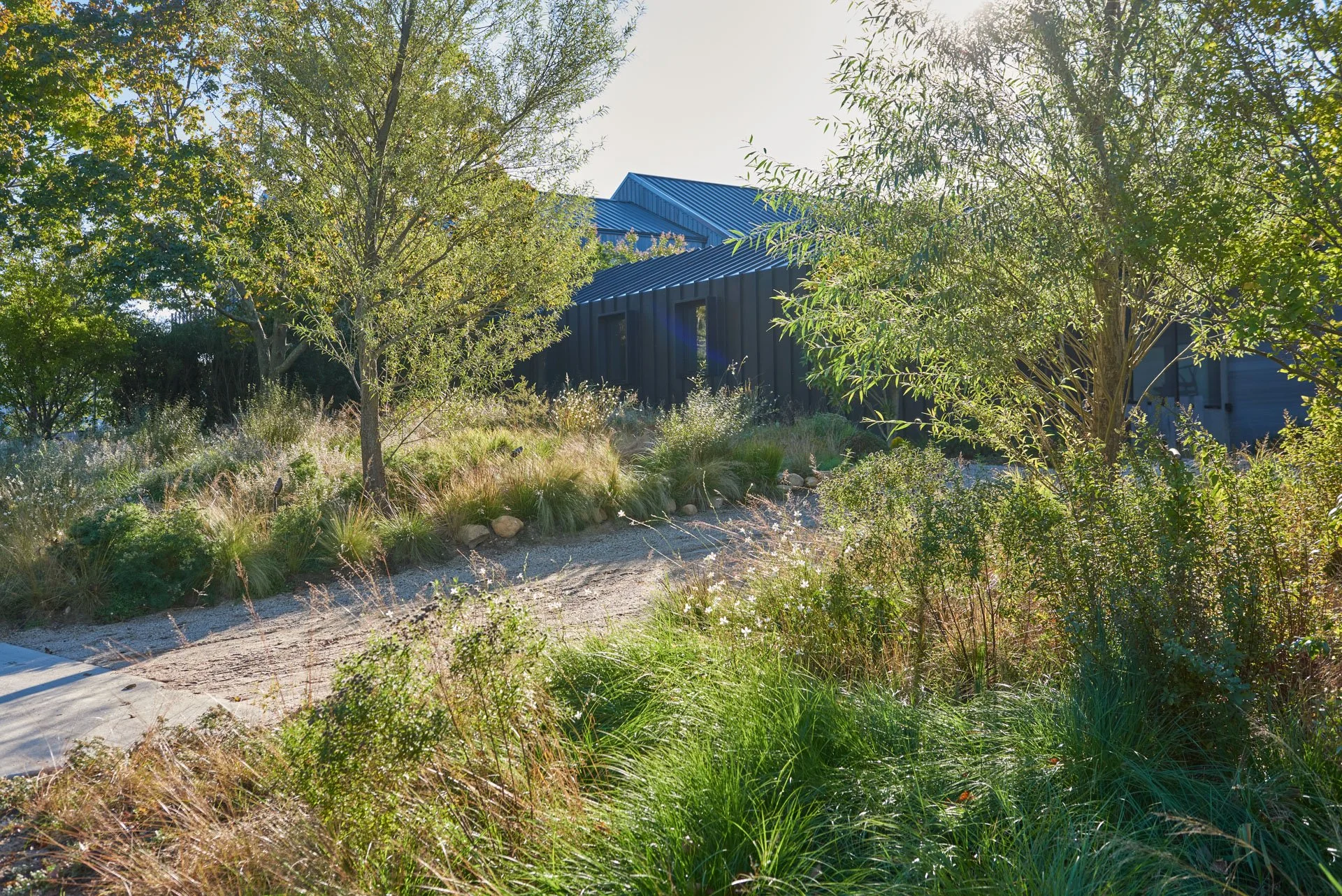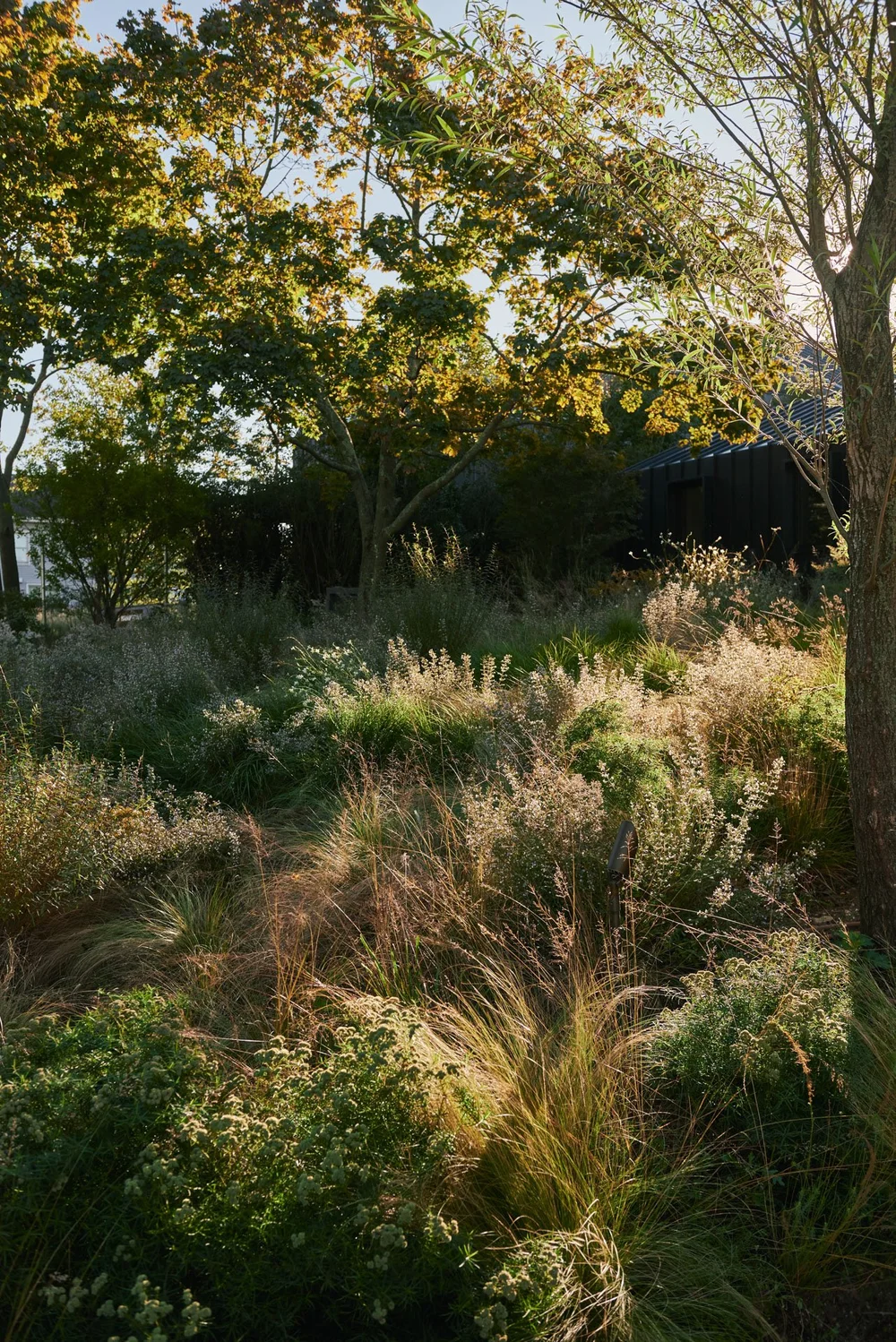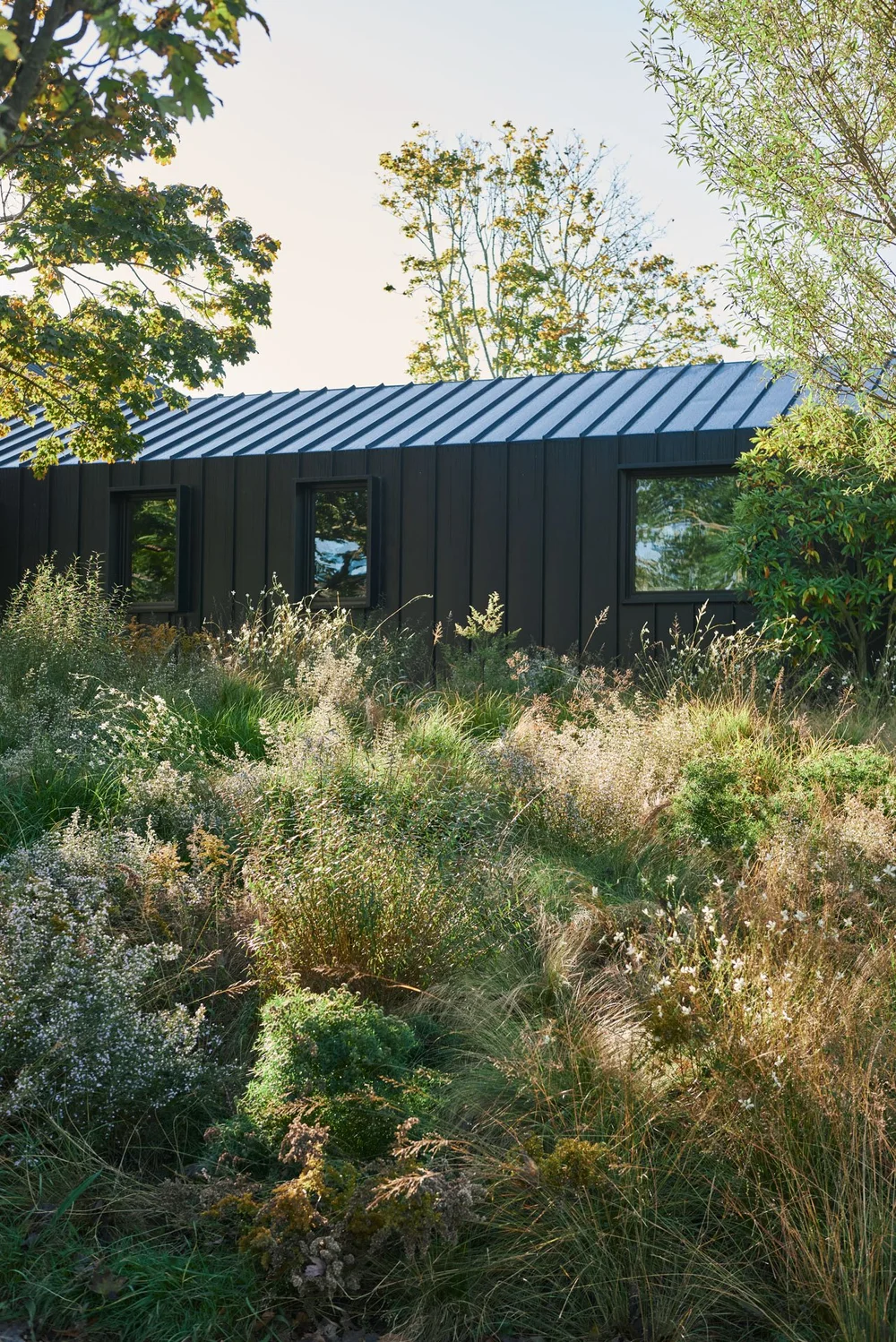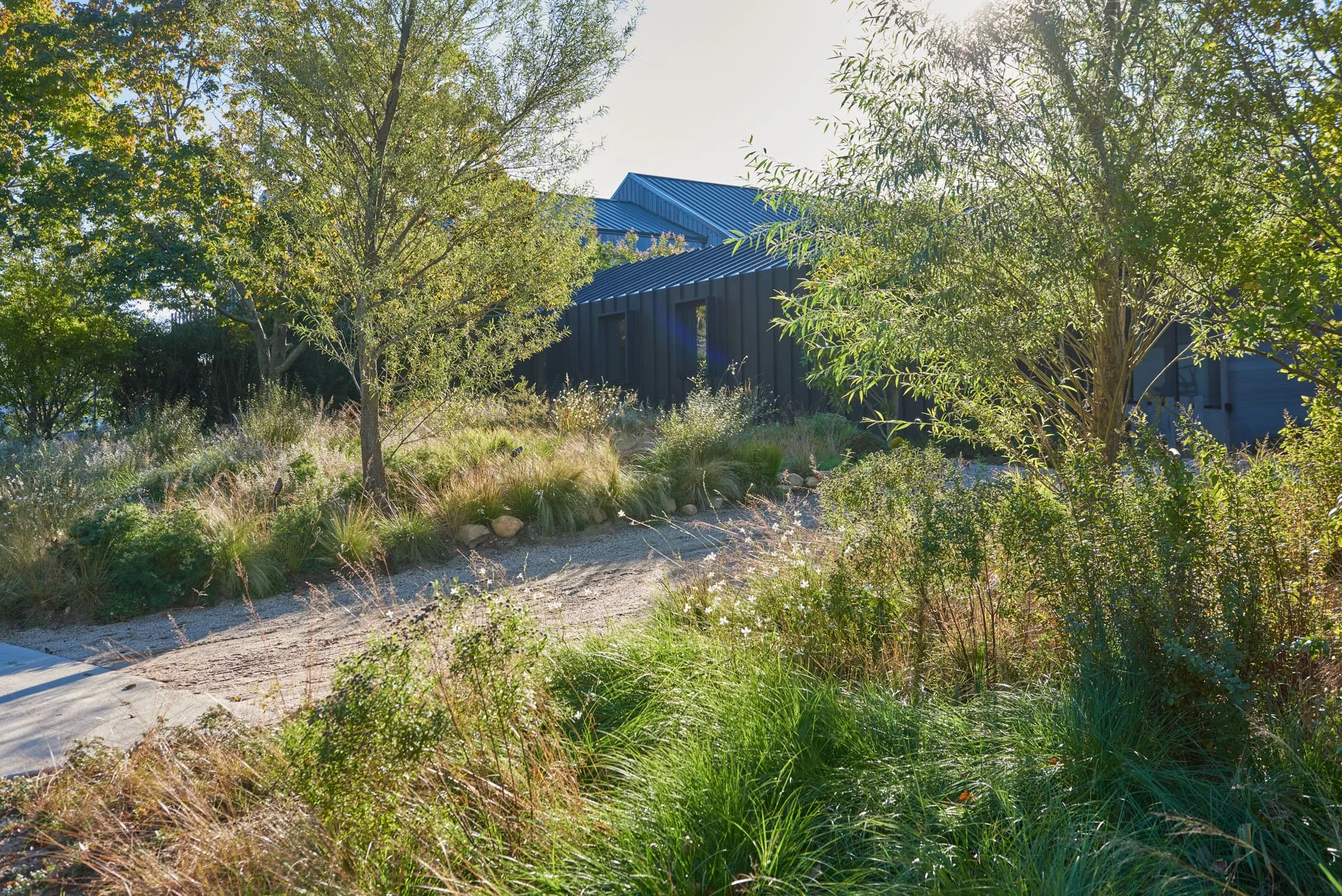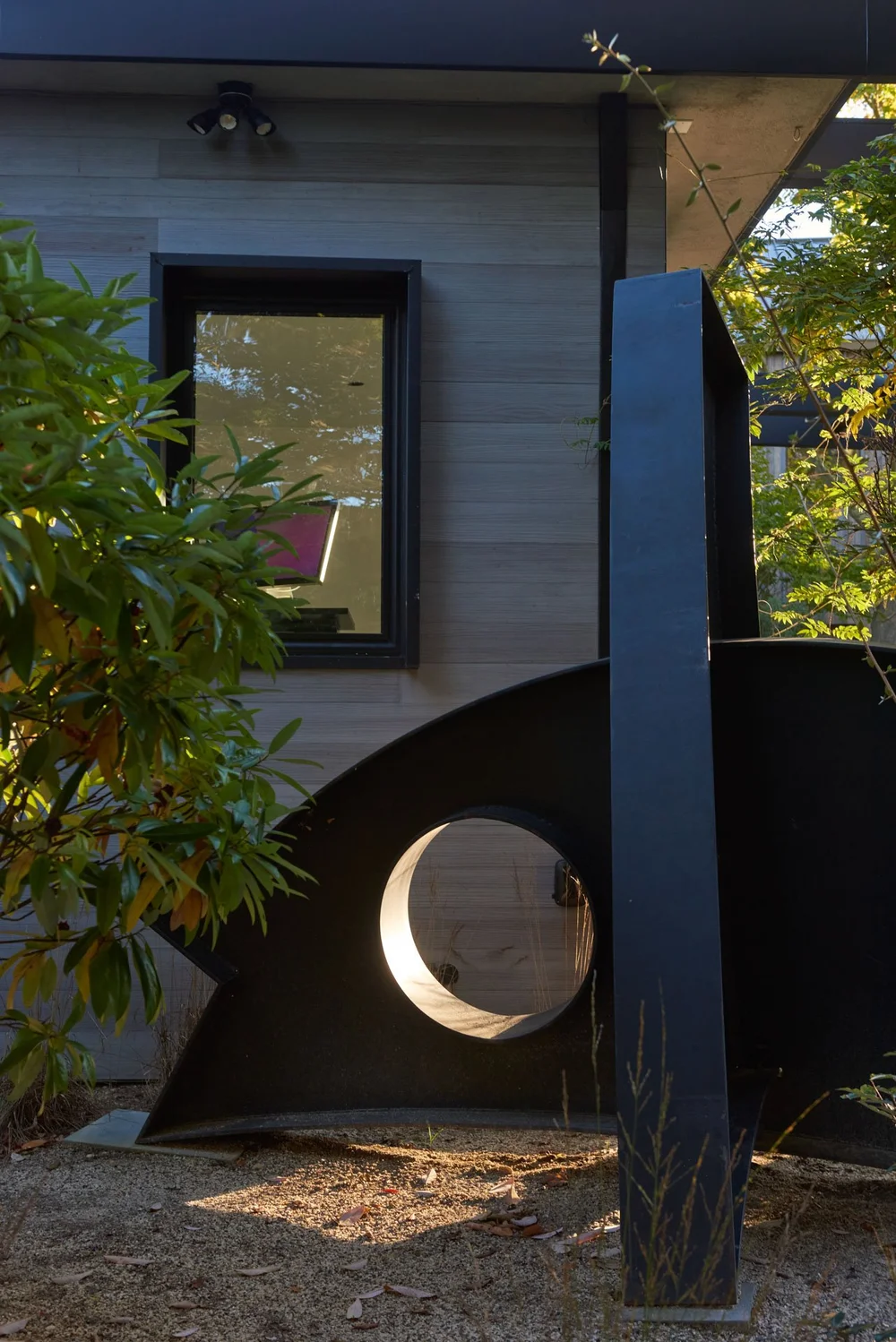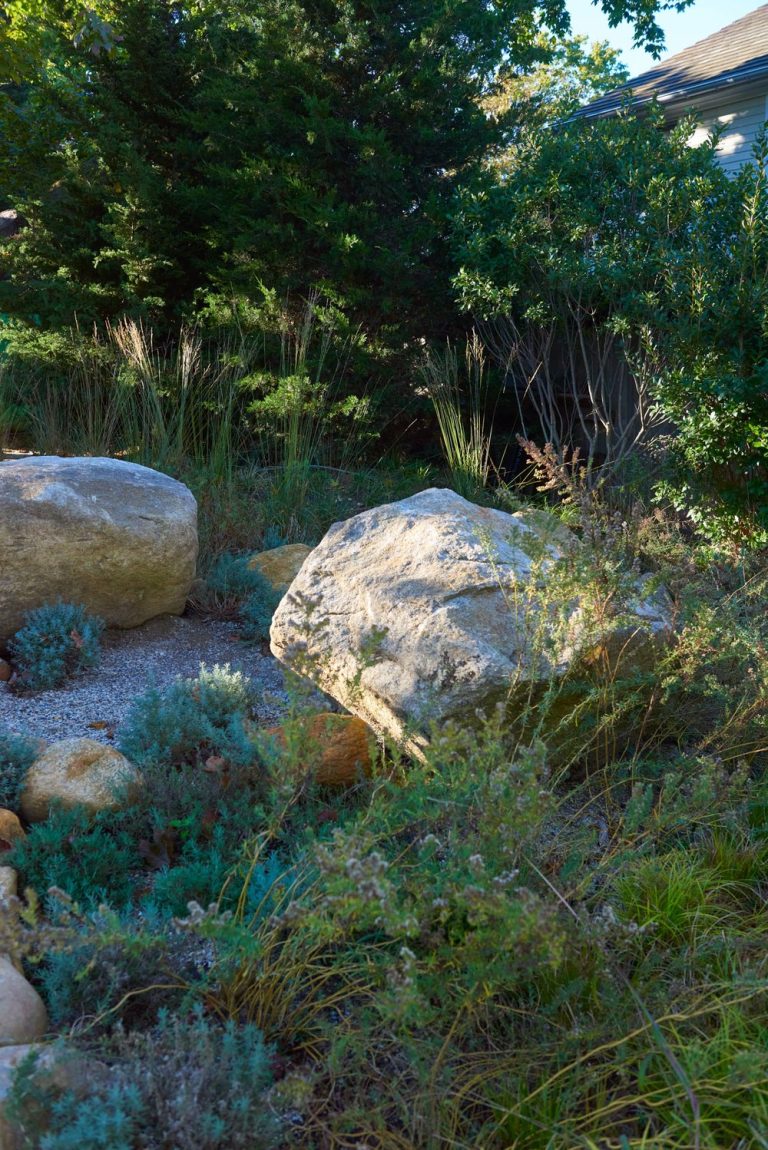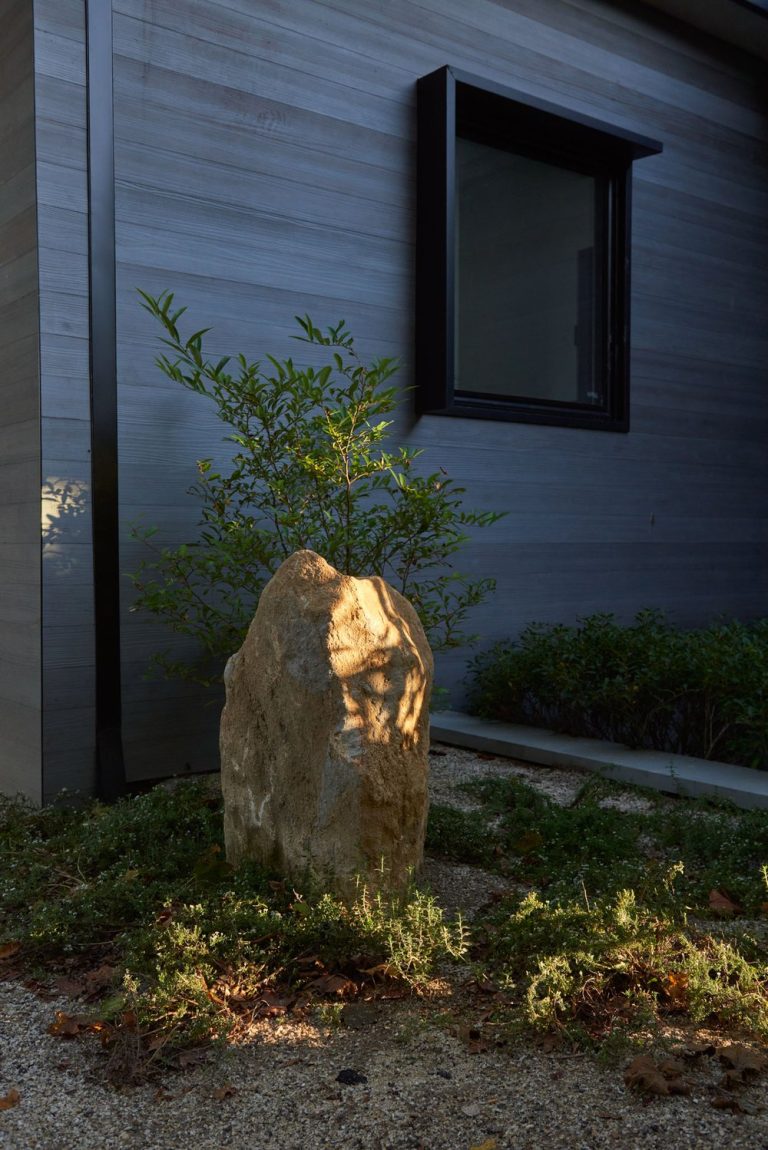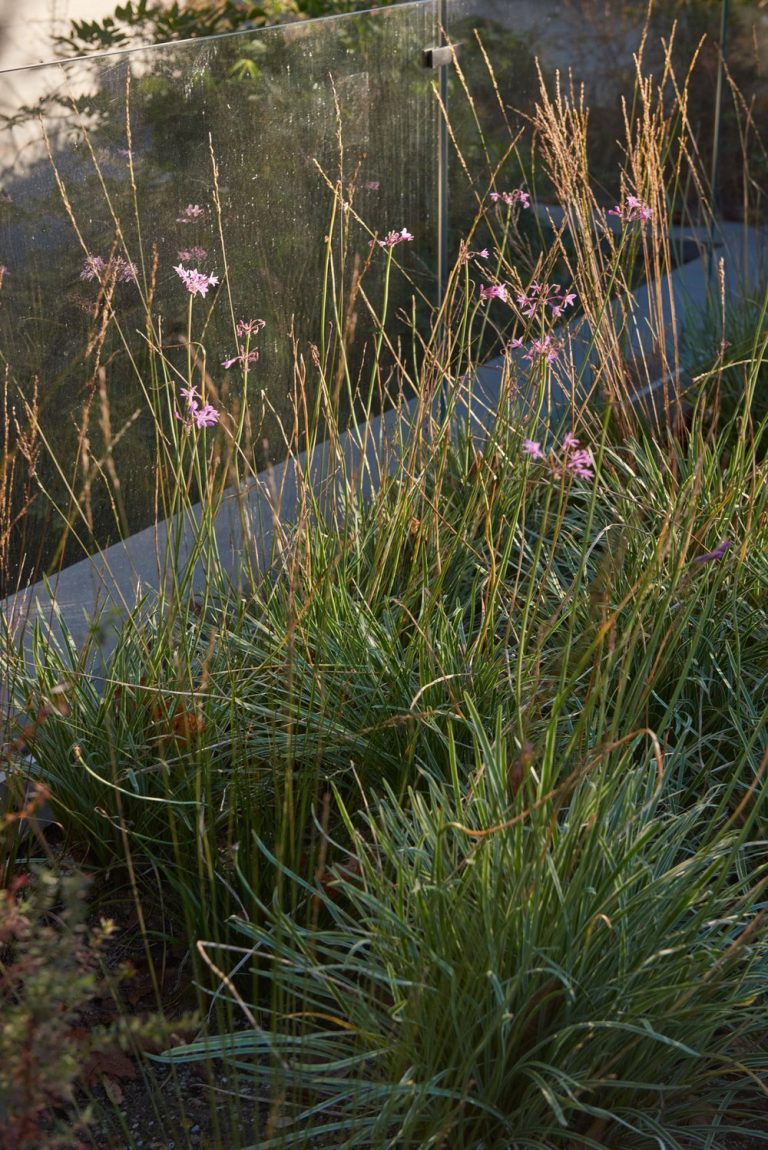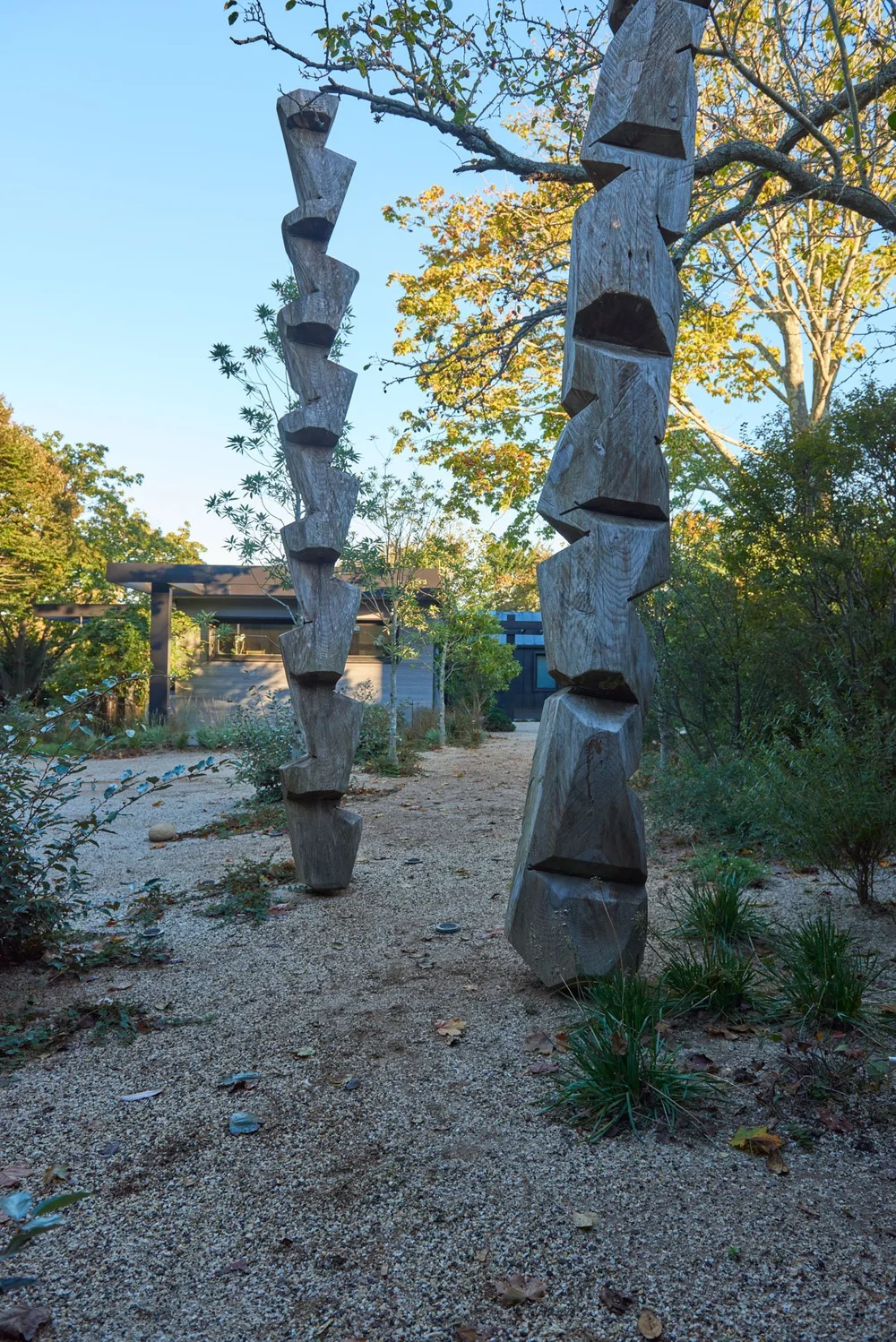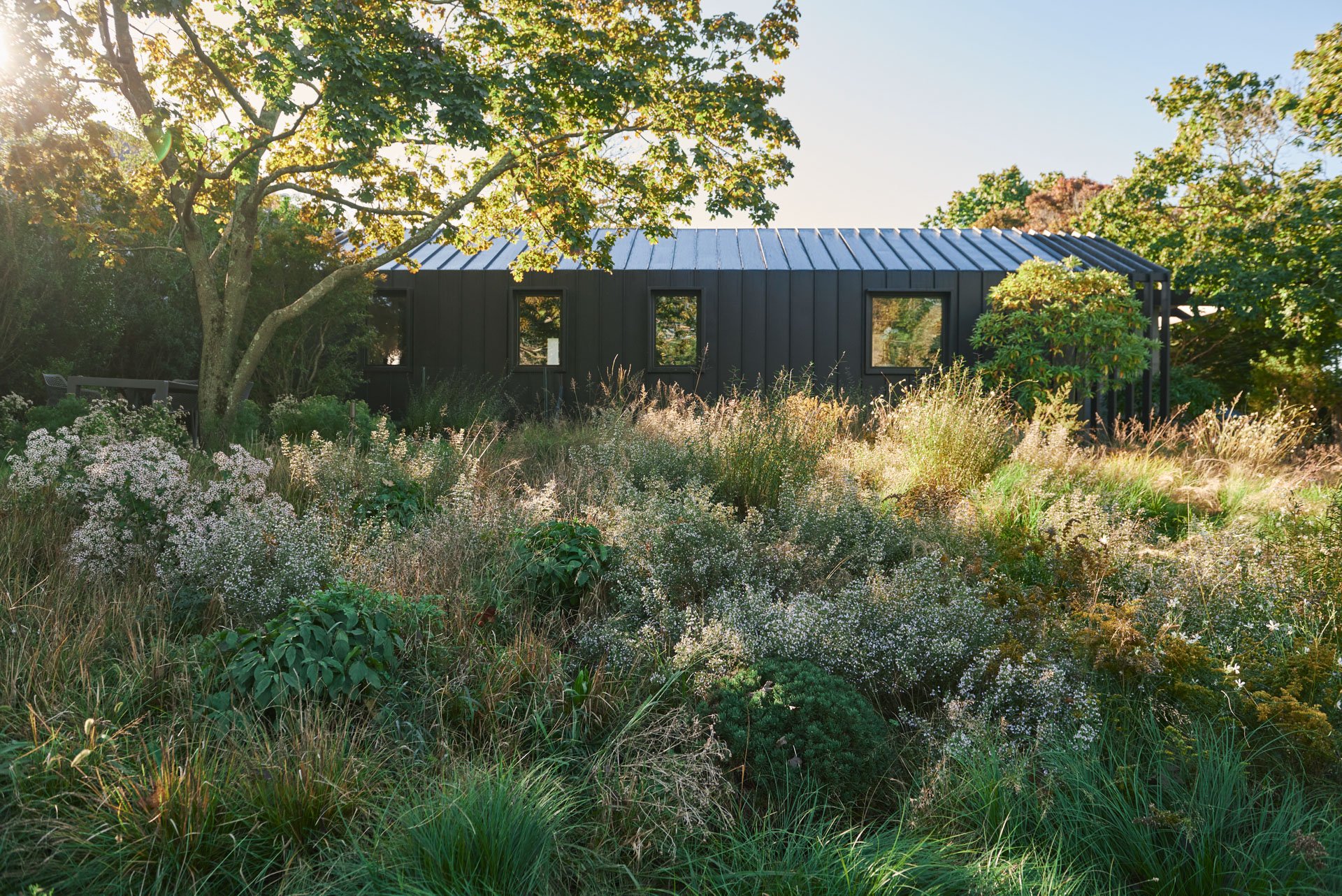
Sustainable and wild landscaping
- Project: deMauro + deMauro
- Photography: deMauro + deMauro
de Mauro + de Mauro designs a landscape of native pollinator plants on Montauk Highway with sustainability as a priority. On the Bridgehampton Native property, designed by Martin Architects, grows a garden that seeks to connect with nature in its most essential form. Sustainable and wild landscaping.
The approach to the garden
In their new space in Bridgehampton, the studio proposes a sustainable and wild garden in a new “urban” setting, developing a plan that includes a meadow, a towering tree line over the driveway entrance and an informal courtyard.
A matrix planting plan was developed, seeking to create a sustainable ecosystem with less weeds and less need for irrigation using multiple plant species, featuring native and pollinator plants.
Landscaping in search of life
The meadow is a point of interest throughout the year due to the choice of species: grasses that change color according to the season and floral species that invite wildlife, attracting animals.
To flank both sides of the entrance and create a dramatic effect, two rows of grand Silver Column Willows were planted. A very visible and present choice that is accompanied by Salix purpurea, which is scattered throughout the property and accentuates the drama.
Dotting the perimeter of the garden were planted native Myrica pennsylvanica, Aronia melanocarpa and Lindera benzoin, as well as native Eastern Red Cedars, Ilex opaca, Ilex verticillata and Prunus maritima.
Martin Architects was inspired by the beauty of the native East End environment, as well as more arid European landscapes. Drawing on these references, natural stone dust was chosen for the driveway entrance and parking areas, achieving a muted tonal quality that complements the silvers and greens of the landscape.
As you move through the property, the plant material leaves more room for the stone dust, creating more negative space until you finally reach an informal courtyard with evergreen shrubs.
Along the base of the building, a wide variety of floral and native species are planted directly into the ground dust.
Martin Architects’ landscaping focuses the design on a more sustainable and natural concept, which encourages wildlife and interaction with the environment. The study of the variety of species and their characteristics is fundamental to achieve the desired objective.

